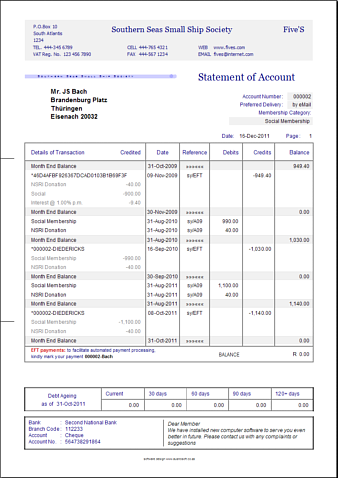Content

The form of budget authority is usually determined in the authorizing statute for a program. The authorizing statute may authorize a particular type of budget authority to be provided in annual appropriations acts, or it may actually provide the budget authority in one of its forms. An appropriation may make funds available from the general fund, special funds, trust funds, or authorize the spending of offsetting collections credited to expenditure accounts, including revolving funds. Borrowing authority is usually authorized for business-like activities where https://online-accounting.net/ the activity being financed is expected to produce income over time with which to repay the borrowing with interest. Contract authority is a traditional form of budget authority for certain programs, particularly transportation programs. Obligations and outlays resulting from permanent budget authority, including the authority to spend offsetting collections credited to expenditure accounts, account for more than half of the budget totals. Put another way, less than half of the obligations and outlays in the budget result from annual appropriations acts.
- These assumptions may be included in the explanatory statement, but they are not binding on the committees of jurisdiction.
- While estimating the beginning fund balance is a requirement of the budget process, it does not necessarily need to be used for appropriations in the forthcoming budget.
- Just like budgets help people, corporate budgeting help keep businesses stay on track.
- Creating and using a budget is not just for those who need to closely monitor their cash flows from month to month because money is tight.
- Because capital projects often overlap fiscal periods, it is necessary to reauthorize some expenditure authority to ensure project completion.
- For this reason, the ability to prepare a budget is one of the most crucial skills for any business leader—whether a current or aspiring entrepreneur, executive, functional lead, or manager.
- Instead of thinking of the two documents as competing, view them as complementary, with each playing a role in driving your business’s performance.
That credit card still calls your name, your clothes category seems awfully small and you feel deprived. If you simply increase your income without a budget to handle the extra cash properly, the gains tend to slip through the cracks and vanish. Once you have your budget in place and have more money coming in than going out , you can start investing to create more income.
Keep a Budget Journal
The size and scope of those decisions make the budget process one of the most important and complex exercises in public policy making. Addressing your financial situation and distinguishing between needs and wants is an important first step before creating your annual budget.
- These budgets taken together will be part of the budgeted balance sheet.Figure 10.5shows how these budgets relate.
- \4\ Present value is a standard financial concept that allows for the time value of money, that is, for the fact that a given sum of money is worth more at present than in the future because interest can be earned on it.
- The sales budget is often the first to be developed, as subsequent expense budgets cannot be established without knowing future cash flows.
- An ESCO is an energy service company that contracts with a facility owner or a utility to acquire, design, install, maintain and/or finance energy conservation, cogeneration or renewable energy projects.
- Many people find that just by looking at aggregate figures for discretionary expenses, they are spurred to change their patterns and reduce excessive spending.
- Contingencies should not be considered as opportunities for extra work or to change original budget decisions.
The guidance is aimed not just at budget holders but at all those who are responsible for the delivery of some aspect of education. Budgeting helps plan for those times when cash is in short supply and bills need to be paid. Proper budgeting shows when and for how long a cash shortage may exist. DaQuan can see the months when the cash payments exceed the cash receipts and when the company is in danger of having a cash balance below the minimum requirement of $10,000. Knowing the inflow and outflow of cash will help him plan and manage the shortage through a line of credit, delay in purchasing, delay in hiring, or delay in payment of non-essential items. Because budgets are used to evaluate a manager’s performance as well as the company’s, managers are responsible for specific expenses within their own budget. Each manager’s performance is evaluated by how well he or she manages the revenues and expenses under his or her control.
The Fiscal Challenge
The bottom-up approach (sometimes also named a self-imposed or participative budget) begins at the lowest level of the company. After senior management has communicated the expected departmental goals, the departments then plans and predicts their sales and estimates the amount of resources needed to reach these goals. This information is communicated to the supervisor, who then passes it on to upper levels of management. The advantages of this approach are that managers feel their work is valued and that knowledgeable individuals develop the budget with realistic numbers. The drawback is that managers may not fully understand or may misunderstand the strategic plan. Sequester–A sequester is the cancellation of budgetary resources provided by discretionary appropriations or direct spending legislation, following various procedures prescribed in law. Public enterprise funds–Public enterprise funds are revolving accounts for business or market-oriented activities conducted primarily with the public and financed by offsetting collections that are credited directly to the fund.
What are the four 4 key principles of budgetary control?
Setting standards to coordinate and control the budget process (policies and procedures). Recording and measuring current financial performance (preparing budgets). Making comparisons between actual and budgeted results (variance analysis). Taking appropriate corrective action as required.
Fund level appropriations are typically used for special revenue, capital project, and enterprise funds. Depending on the entity, they may also be used for the general fund. When funding has been secured, detailed project budgets should be developed. Individual budgets covering the life of each project are necessary for the proper monitoring of the related activity. Understanding Budget Period Although cost estimates developed during the planning process may be used to determine the size of the bond initiative, actual project budgets must contain more detailed information. Construction project budgets using a multiyear format should be reviewed periodically by administrators with regular reports provided to the board on the progress of each project.
What is the difference between yearly and monthly budgets?
This column also reflects any supplemental appropriations or rescissions proposed in the budget. They are recorded when obligations are paid, in the amount that is paid. However, obligations may be paid and outlays recorded even though no cash is disbursed. (Receipts are also recorded for the deductions that represent payments to the Government.) Outlays are recorded when debt instruments are used to pay obligations. Because no cash is paid up front to the nominal owner of the asset, a debt is recorded. In such cases, the actual cash payments, nominally lease payments, are recorded as repayments of principal and interest.

Regardless of the budgeting approach your organization adopts, it requires big data to ensure accuracy, timely execution, and of course, monitoring. Beginning with the expenditures of the prior period, each line item in the budget is adjusted for some factor in the upcoming period. The factors might adjust costs up or down depending on the scenario. One of the most important aspects of the incremental budget approach is that it is easier to adopt within large, well-established businesses.
Timing matters for cash flows because you need to get cash before you spend it, but also because time affects value, so it is always better to have liquidity sooner and hang onto it longer. A cash budget provides a much more detailed look at these timing issues, and the risks—and opportunities—of cash management that you may otherwise have missed. A good management tool is the cash budget, which is a rearrangement of budget items to show each month in detail. Irregular cash flows can be placed in the specific months when they will occur, allowing you to see the effects of cash flow timing more clearly. Without the clear and unconditional support of top management, any budget process is bound to fail.
- They are deducted from the Government-wide totals for budget authority and outlays.
- During months when your business is slow, you’ll need to lower your flexible expenses.
- The process of formulating the budget begins not later than the spring of each year, at least nine months before the budget is transmitted and at least 18 months before the fiscal year begins.
- Similarly, if the actual tonnage was significantly less than budgeted, then what is indicated as a marginal saving in the variance may, in fact, be a considerable overspending.
- In the short term, monitoring your gas expense alerts you to the fact that you need to change your financial behaviour by driving less, spending less on other things, or earning more.
Financial reporting should demonstrate whether resources were obtained and used in accordance with the entity’s legally adopted budget. It should also demonstrate compliance with other finance-related legal or contractual requirements. Once you’ve totaled up your revenue and estimated expenses, subtract the expense total from the revenue total to get the difference.

